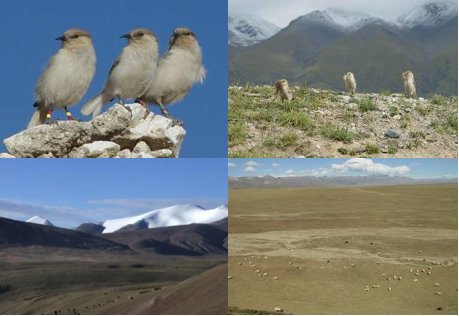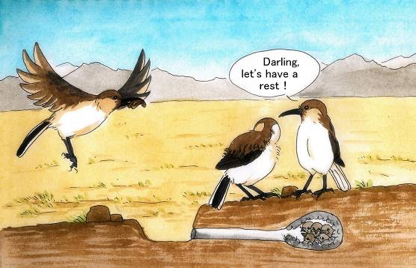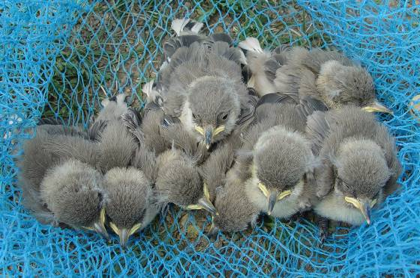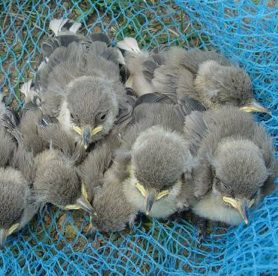What help brings most benefit?
LINKED PAPER
Nest helpers improve parental survival but not offspring production in a high-elevation passerine, the Ground Tit Pseudopodoces humilis.
Yinhui Li, Shaobin Li, Cheng Guo, Guoyue Zhang, Yang Zhou & Xin Lu. 2015
IBIS. DOI: 10.1111/ibi.12266
Current productivity vs. future survival ― which benefit will breeders gain from helpers’ help under extreme conditions?
Vast, harsh Tibetan alpine meadows are home to Ground Tits Pseudopodoces humilis, the largest member in the family Paridae (Londei 2002; Fig. 1). Ground Tits, the world’s highest distributed birds, have learned how to protect themselves and their offspring from the cold and high-wind climate: to construct long burrows under the earth for reproducing and roosting (Ke & Lu 2009). This contrasts to Ground Sparrows (Pyrgilauda), a group of birds indigenous to the high-elevation meadow habitats, which nest in small mammals’ burrows (Zeng and Lu 2009). Another impressive characteristic of Ground Tits is cooperative breeding: sons of some breeding pairs stay in their natal territories and aid in caring for their siblings. Most cooperative breeders are residents of the tropics or subtropics, especially in the African savannah and Australian woodlands (Jetz & Rubenstein 2011) and this behaviour is uncommon to birds inhabiting extreme environments. So we were surprised to discover this phenomenon for the first time in 2004.

Figure 1. Ground Tits and their habitats © Dianhua Ke
Since then, we are lucky enough to have Ground Tits as a model to explore the evolution of avian sociality, thanks to several advantages associated with this study system:
- The burrow-nesting and roosting habits of the birds facilitate us to mark all family members, for the adults simply by putting a 1-m2 mist net over the burrow entrance, and for nestlings by digging a vertical shaft into the burrow chamber.
- Open meadow habitats allow us to locate and identify each banded bird.
Year-round residence offers us the opportunity to get longitudinal information on demography and social behaviour of the birds. - Undoubtedly, we have been rewarded more with scientific data from these conveniences, which may compensate the physical expenditure paid for doing field work in the environments with strong solar radiation and thin air.
One of the questions frequently asked by researchers of avian cooperative breeding is what benefits helping may bring about to breeders. Increasing brood productivity and parental survivorship are two different forms of helper effect (Figs. 2 and 3). Which of them is expressed depends on how parents react to helpers’ contribution, and this in turn depends on whether young are hungry. If nestlings encounter starvation, parents with helpers, relative to those without them, will maintain provisioning efforts to fledge more offspring; otherwise, they will take a load-lightening strategy to enjoy personal survival (Hatchwell 1999). Then, how do Ground Tit parents make this decision when they live in such a challenging environment for organisms’ survival?

Figure 2. A cooperatively breeding Ground Tit family consisting of parents and a male helper © Qi Zhang

Figure 3. A brood of Ground Tit nestlings © Dianhua Ke
With this question in mind, we have worked on a Ground Tit population at the northern Tibetan plateau. With the data of 5-year field work, we recently published a paper and produced the following evidence: helped parents did not fledge more offspring, but they lived better (Li et al. 2015).
This result is consistent with our earlier finding that helped parents tend to reduce their provisioning efforts in response to the presence of helpers (Lu et al. 2011). Life history theory may explain our finding. A greater difference in annual survival rate exists between adults and juveniles in Ground Tits than in lowland cooperative breeders, especially in association with severe high-elevation conditions, and especially during winter. In such a case, selection should favour Ground Tit parents to value future reproduction over the current once additional investment from helpers is available.
However, the current result is far from the final answer to the question about helper effect. Lifetime reproductive success is a better indicator of breeder’s fitness than yearly survival rate used in this study. Across Ground Tit’s range, elevations (2000 to 5500 m) and climates (annual mean temperature −3 to 15 C, annual total precipitation 50 to 800 mm) extensively vary, thereby creating steep environmental gradients along which the birds’ social system has evolved. Helper effect is expected to differ among populations exposed to different ecological conditions. We are undertaking a long-term, broad-scale project that will produce insights into the evolution of Ground Tit society, including helper effect.
References and further reading
Hatchwell, B. J. 1999. Investment strategies of breeders in avian cooperative breeding systems. American Naturalist 154: 205–219. View
Ke, D. H. & Lu, X. 2009. Burrow use by Tibetan Ground Tits Pseudopodoces humilis: coping with life at high altitudes. Ibis 151: 321–331. View
Jetz, W. & Rubenstein, D. R. 2011. Environmental uncertainty and the global biogeography of cooperative breeding in birds. Current Biology 21:72–78. View
Londei, T. 2002. Hume’s Groundpecker Pseudopodoces humilis: the smallest corvid or the largest tit? Oriental Bird Club Bulletin 36: 52–53.
Lu, X., Yu, T. L. & Ke, D. H. 2011. Helped Ground Tit parents in poor foraging environments reduce provisioning effort despite nestling starvation. Animal Behaviour 82: 861–867. View
Zeng, X. H. & Lu, X. 2009. Interspecific dominance and asymmetric competition with respect to nesting habitats between two snowfinch species in a high-altitude extreme environment. Ecological Research 24: 607–616. View
If you want to write about your research in #theBOUblog, then please see here.





